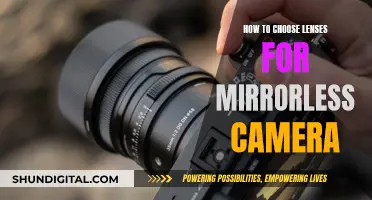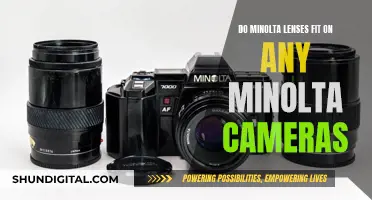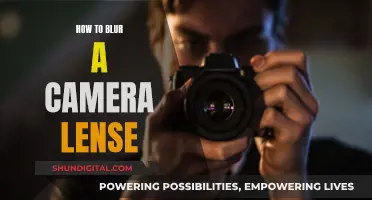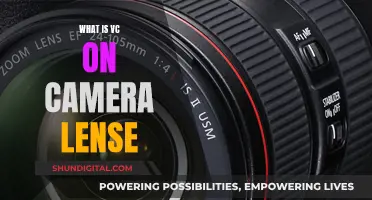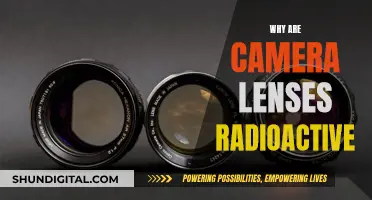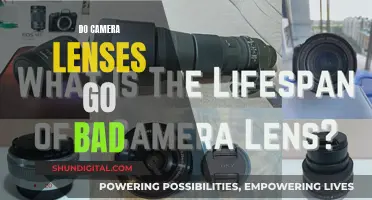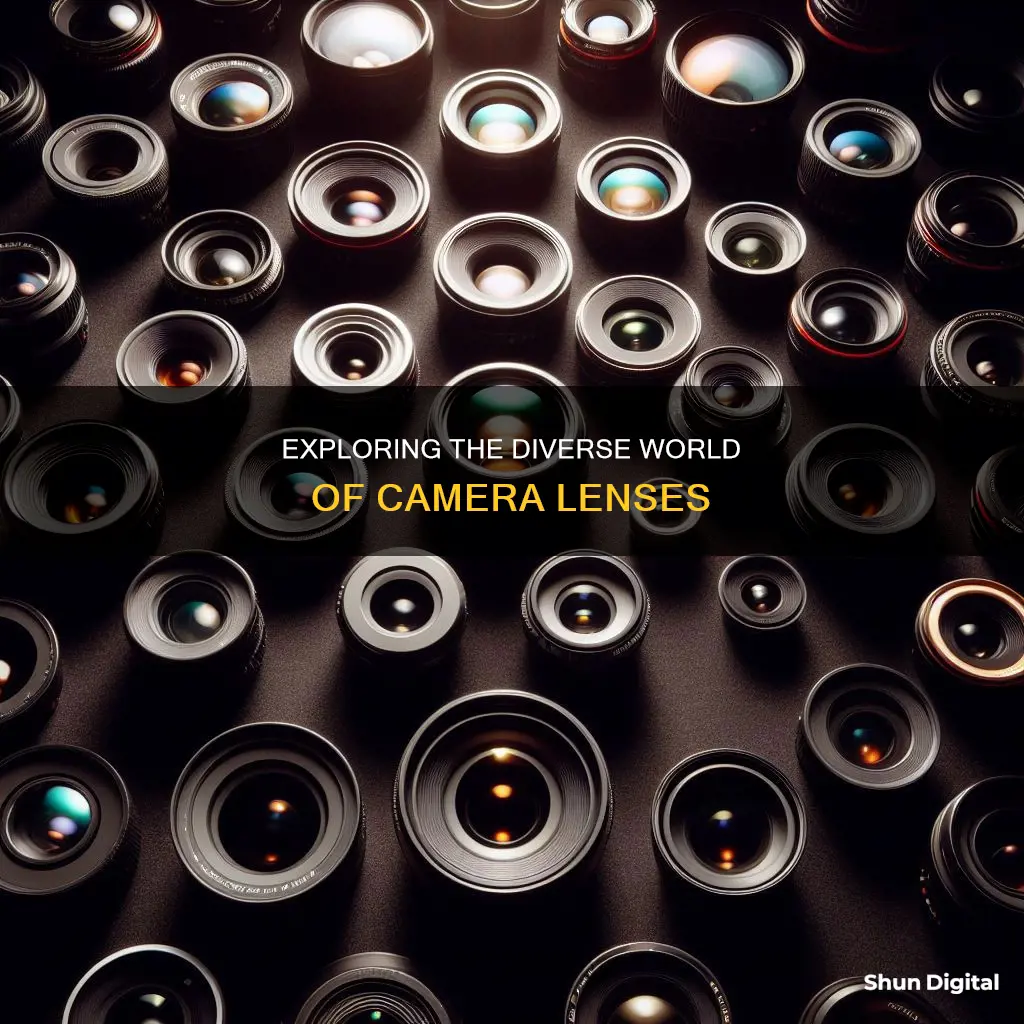
There are two main types of camera lenses: prime and zoom. Prime lenses have a fixed focal length, while zoom lenses have a variable focal length. Within these categories, there are several other types of lenses, including standard, wide-angle, and telephoto.
Prime lenses are generally sharper, smaller, lighter, and cheaper than zoom lenses. They are also optically superior as they only have one focal length to deal with. However, the trade-off is that you only get one focal length with a prime lens, meaning you may need to buy multiple lenses for different types of shots.
Zoom lenses, on the other hand, offer more flexibility as they allow you to change your composition by zooming in and out. This can be particularly useful when you don't have the option to move closer or further away from your subject. However, zoom lenses tend to be more expensive, heavier, and may have smaller maximum apertures.
In addition to the prime and zoom categories, there are also specialist lenses such as macro lenses, which are used for extreme close-ups, and fisheye lenses, which give a distorted view of the subject.
Ultimately, the type of lens you choose will depend on your specific needs and preferences as a photographer.
| Characteristics | Values |
|---|---|
| Number of Types | 2 main types, with several other lenses included |
| Prime Lens | Fixed focal range, unable to zoom in or out |
| Prime Lens Focal Length | 6mm fisheye, 14mm ultra-wide-angle, 50mm standard, 600mm telephoto, and lengths in between |
| Standard Prime Lens | 50mm, higher aperture, ideal for low light, relatively small, large apertures |
| Telephoto Prime Lens | 72-85mm (short telephoto), 300mm+ (super telephoto), outstanding image quality, can be challenging to frame a subject, see objects further away |
| Macro Prime Lens | 1:1 copy of the subject, extremely close perspective, various shapes and sizes, good for product photography and close-up photography of small subjects |
| Zoom Lens | Provides a range of focal lengths and a zoom range |
| Standard Zoom Lens | Flexible zoom range from wide to slightly telephoto, not great for close-up or macro photography, might not have enough reach |
| Wide-Angle Zoom Lens | Captures more of the scene, useful in cramped environments, best for wide-angle landscape photos and shots in small places |
| Super Zoom Lens | Tries to cover a wide range, not as wide-angle as a wide-angle zoom lens, allows you to fit a lot in the frame and zoom farther, image quality is often inferior to other zoom lenses |
| Telephoto Zoom Lens | Longer zoom to see distant things, adjust the zoom level to frame the subject and capture wildlife, sports, etc. |
What You'll Learn

Prime vs Zoom Lenses
There are two main types of camera lenses: prime and zoom. Each has its own advantages and disadvantages, and photographers may prefer one over the other depending on their specific needs and shooting style.
Prime Lenses
Prime lenses have a fixed focal length, which means that the angle of view cannot be changed. To enlarge the subject and make it fill more of the frame, the photographer must physically move closer to the subject. Similarly, the only way to fit more into the frame is to step back. Prime lenses come in various sizes and focal lengths, from fisheye to super-telephoto. Some popular prime lenses include the Canon RF 85mm f/2 Macro, Panasonic Lumix S 85mm f/1.8, and Panasonic Lumux 42.5mm f/1.7.
Advantages of Prime Lenses
- Prime lenses are often significantly cheaper than zoom lenses. For example, a 24mm f/2.8 lens costs around $400, while a 24-70mm f/2.8 will cost $1900-2300.
- Prime lenses are generally smaller and lighter than zoom lenses, making them more portable and easier to carry around.
- Prime lenses often have larger maximum apertures, which allow for better low-light performance and shallower depth of field, resulting in beautiful "bokeh" effects.
- Prime lenses typically have simpler optical designs, making it easier to incorporate larger maximum apertures without significantly increasing size and cost.
- Prime lenses can help photographers learn composition and find better angles by forcing them to "zoom with their feet" and move physically closer or farther from the subject.
Disadvantages of Prime Lenses
- Prime lenses offer less versatility than zoom lenses since they only have one focal length. Photographers may need to carry multiple prime lenses to cover different focal lengths.
- Prime lenses can be more challenging to use, especially for beginners, as they require more physical movement and composition skills.
Zoom Lenses
Zoom lenses have a variable focal length, allowing photographers to change the angle of view by turning the zoom ring. Zoom lenses are very versatile and can be great when photographers need to cover a variety of situations. They are often used by landscape and wildlife photographers who may be limited to a particular spot but need to zoom in on specific areas. Some popular zoom lenses include the Nikon 180-600mm f/5.6-6.3, Canon RF 70-200mm f/2.8 L, and Sony FE 16-35mm f/2.8 GM II.
Advantages of Zoom Lenses
- Zoom lenses offer versatility and convenience, allowing photographers to quickly change from wide-angle to telephoto without needing to move physically.
- Zoom lenses often have image stabilization systems, such as Canon's Image Stabilization (IS) or Nikon's Vibration Reduction (VR), which help to reduce camera shake and allow for slower shutter speeds, especially in low-light conditions.
- A single zoom lens can replace two or three prime lenses, reducing the weight and number of lenses that photographers need to carry around.
- Zoom lenses are ideal when photographers need to work in constrained spaces where they cannot move around much.
Disadvantages of Zoom Lenses
- Zoom lenses are usually more expensive than prime lenses, especially those with larger maximum apertures.
- Zoom lenses tend to be bigger and heavier than prime lenses, especially those with longer focal lengths or professional-grade lenses.
- Zoom lenses may not be as sharp as prime lenses, especially near their maximum focal length or at their widest focal length for cheaper lenses.
Both prime and zoom lenses have their advantages and disadvantages, and the best choice depends on the photographer's specific needs and shooting style. Prime lenses offer superior image quality, larger maximum apertures, and lighter weight, while zoom lenses provide versatility and convenience with their variable focal lengths. Ultimately, the decision between a prime and zoom lens should be based on the photographer's budget, preferred shooting style, and the specific applications they have in mind.
Bigger Camera Lenses: Do They Make a Difference?
You may want to see also

Wide-angle lenses
A wide-angle lens is a lens that covers a large angle of view, allowing more of the scene to be included in the photograph. This is particularly useful for landscape, architecture, and interior photography, as it enables photographers to capture expansive backgrounds while emphasising the difference in size or distance between objects in the foreground and background.
When using a wide-angle lens, it is important to understand how they distort and enhance perspective. Objects closer to the camera will appear larger than those farther away, even if they are the same size. Additionally, any subject with straight lines will appear to converge faster than the eye normally perceives. This effect can be used to create a sense of depth and inclusion, making viewers feel like they are part of the scene.
To use a wide-angle lens effectively, it is crucial to have something close to the lens. Getting within inches of the subject can add depth and perspective to the image, making it more interesting and inviting viewers to explore the photograph. It is also important to have a clear subject by getting close enough to make it stand out. Simplifying the composition and including less "stuff" can also help create stronger images.
When photographing people with a wide-angle lens, it is important to consider the effect it will produce. Wide-angle lenses can distort facial features, making noses look elongated and jaws protrude. If the intention is to flatter the subject, it is generally better to use a slightly longer lens in the short telephoto range (85-135mm full-frame, 60-90mm APS-C). However, wide-angle lenses can be used effectively for environmental portraits or to add a sense of fun or humour to the image.
When choosing a wide-angle lens, there are two main types: short-focus lenses and retrofocus lenses. Short-focus lenses are typically used for large format view cameras and rangefinder cameras, as they give less distortion and do not require a long back focal distance. On the other hand, retrofocus lenses have an asymmetrical design that allows the rear element to be farther away from the film plane, making them suitable for single-lens reflex cameras.
Minolta Lenses: Universal Fit for Minolta Cameras?
You may want to see also

Standard lenses
The standard lens has a fixed focal length, typically between 35mm and 85mm, although some sources state that a standard lens can also have a focal length of 50mm, 85mm, or 100mm. For a 35mm film camera or a full-frame DSLR, the 50mm lens is considered standard.
Prime and zoom standard lenses are both common. The natural field of vision makes the standard lens a popular choice for street photographers, travel photographers, photojournalists, and portrait photography.
At higher focal lengths (85mm or 100mm), when coupled with a wide aperture, standard lenses are ideal for portraiture. The wide aperture softens any background detail, making it less likely to distract from the main subject.
The 50mm prime lens, sometimes called the "Nifty Fifty", is a popular choice in many areas of photography and is one of the most common lenses.
How Eclipse Affects Camera Lenses and Photography
You may want to see also

Telephoto lenses
A telephoto lens is a type of long-focus lens used in photography and cinematography. It is designed so that the physical length of the lens is shorter than the focal length. This is achieved by incorporating a telephoto group, a special lens group that extends the light path to create a long-focus lens in a shorter design.
There are two subtypes of telephoto lenses: short telephotos, with focal lengths between 85mm and 135mm, and standard telephotos, with focal lengths between 135mm and 300mm.
Super-telephoto lenses are a type of telephoto lens with a focal length of 300mm or more. They are big, heavy, and expensive, but they are excellent pieces of kit with incredible ingenuity. They have upwards of 10 precisely crafted glass elements.
The magnification quality of telephoto lenses makes them popular for sports and wildlife photography. They allow photographers to capture action shots without venturing onto the pitch, and to get intimate images of wild animals without scaring them or putting themselves in harm's way.
One photographer who reviewed the Canon RF 100-500mm lens noted that the versatility of the lens was paramount, but it came at the cost of allowing them to shoot anything and everything. They also noted that the super zoom range was too much for landscape photography, as anything beyond 250mm caused issues with haze and a "mirage" effect.
Another photographer who used the Canon RF 100-500mm lens for wildlife photography in Alaska found that the stabilization of the lens was "actual magic", allowing them to film video at 500mm handheld and get sharp photos in low light.
In summary, telephoto lenses are a type of long-focus lens used in photography and cinematography, offering incredible magnification and versatility for photographers.
The Intricate Art of Assembling Camera Lenses
You may want to see also

Super-telephoto lenses
The most important feature of these lenses is their focal length, which allows photographers to capture images from an extremely long distance. The second most important feature is the aperture. Super-telephoto lenses with extremely fast apertures are less common, and the fastest options are also significantly larger and more expensive than more conservative, slower models.
Image stabilisation (IS) is almost necessary when hand-holding lenses at these focal lengths. Modern advancements from most manufacturers are rated for several stops of compensation, which is exceptionally useful when trying to shoot handheld.
Another benefit of super-telephoto lenses is the multiple IS modes available. Usually, there are specific settings for panning and general handheld shooting. This allows shooters to track horizontal motion more easily in the scene and capture it.
Nearly every piece of optical technology is utilised in super-telephoto lenses, from nano-coatings to prevent flaring, to fluorite elements that control aberrations. Most common are extra-low dispersion elements, which work with other elements to produce the sharpest, most detailed images possible by reducing visible aberrations and correcting for distortion.
- Tamron 150-600mm f/5-6.3 Di VC USD G2
- Sigma 60-600mm F/4.5-6.3 DG OS HSM
- Sigma 500mm F/4 DG OS HSM
- Canon RF 800mm f/11 IS STM
- Canon RF 600mm f/4 L IS USM
- Sony FE 400mm f/2.8 GM OSS
- Sony FE 600mm f/4 GM OSS
- Olympus M.Zuiko Digital ED 300mm f/4 IS PRO
Camera Lenses: Almost Perfectly Diffraction Limited?
You may want to see also
Frequently asked questions
There are two main types of camera lenses: zoom lenses and prime lenses. However, there are several subtypes, including wide-angle, standard, and telephoto lenses.
A prime lens has a fixed focal length, meaning you cannot zoom in or out. Prime lenses typically offer sharper images and wider apertures but are less versatile and often require additional gear for different framing.
Zoom lenses offer a variable focal length, allowing you to zoom in and out. They are more versatile and flexible but usually more expensive and heavier than prime lenses.
Wide-angle lenses offer a wider field of view, capturing more of a scene. They are commonly used in landscape, architecture, and real estate photography to capture spacious scenes or confined interior spaces.
Telephoto lenses are used when you need to capture subjects from a distance, such as in wildlife, sports, or portrait photography. They offer excellent magnification but have a narrow field of view and are generally bulkier and more expensive.


